 W
WEast Germany had a command economy, similar to the economic system in the Soviet Union and other Comecon member states — in contrast to the market economies or mixed economies of capitalist states. The state established production targets, set prices, and also allocated resources, codifying these decisions in comprehensive plans. The means of production were almost entirely state-owned.
 W
WThis article describes the development of agriculture in East Germany, both the Soviet occupation zone of Germany as well as the German Democratic Republic (GDR) between the years 1945 and 1990.
 W
WBegrüßungsgeld was, from 1970 until 29 December 1989, a gift from the government of the Federal Republic of Germany to visitors from the German Democratic Republic. This situation originated with the policy of the GDR government restricting the amount of East German Marks (M) that could be exchanged into Deutsche Marks (DM) by GDR citizens when on approved travel to the West. At first, the GDR allowed the exchange of 70 M annually into DM, however by 1989, this sum was reduced to 15 M annually, which greatly restricted the ability of GDR citizens to travel to the West, even if they were approved to do so.
 W
WThe Council for Mutual Economic Assistance was an economic organization from 1949 to 1991 under the leadership of the Soviet Union that comprised the countries of the Eastern Bloc along with a number of socialist states elsewhere in the world.
 W
WThe East German coffee crisis refers to shortages of coffee in the late 1970s in East Germany caused by a poor harvest and unstable commodity prices, severely limiting the government's ability to buy coffee on the world markets. As a consequence, the East German government increased its engagement in Africa and Asia, exporting weapons and equipment to coffee-producing nations.
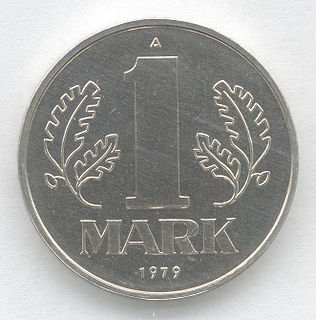 W
WThe East German mark, commonly called the eastern mark (Ostmark ) in West Germany and after the reunification), in East Germany only Mark, was the currency of the German Democratic Republic. Its ISO 4217 currency code was DDM. The currency was known officially as the Deutsche Mark from 1948 to 1964, Mark der Deutschen Notenbank from 1964 to 1967, and from 1968 to 1990 as the Mark der DDR. It was divided into 100 Pfennig (Pf).
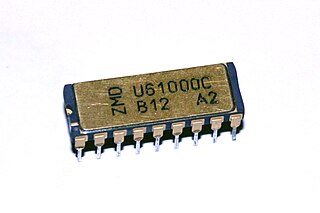 W
WEast Germany was one of the leading computer producers in the Eastern Bloc as purchases of higher technologies from the West were under various embargoes. A program of illegal purchases, copying and reverse engineering of Western examples was established, after which GDR sold these computers to COMECON countries. Under the rule of Erich Honecker electronics, microelectronics and data processing industries grew at average 11.4% in the 1970s and 12.9% during the 1980s.
 W
WForum checks were a form of hard currency in East Germany. From April 1979, all East Germans were required by law to convert any Deutsche Marks they possessed into Forum checks at a branch of the Staatsbank der DDR immediately. A Forum check mark was worth 1 West German Deutsche Mark, the smallest denomination was 50 Pfennigs and the highest was for 500 West German Deutsche Mark. Forum checks were accepted in Intershops as payment for western consumer goods and other products which were available in these shops only. Foreign citizens could use western currencies in these shops.
 W
WThe Handelsorganisation was a national retail business owned by the central administration of the Soviet Zone of occupation in Germany and from 1949 on by the state of the German Democratic Republic. It was created in 1948. The enterprise was arranged into different departments – industrial goods, food, restaurants and department stores – and operated the large “Centrum” department stores in many cities of the GDR. Its stores stood in competition to those of the Konsum cooperative. Nevertheless, both were established brands in the everyday life in the GDR. The HO also operated hotels. After the political turmoil in the GDR in the years 1989 and 1990 the business was sold by the Treuhand trust.
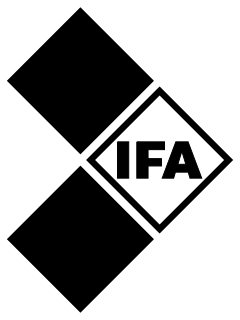 W
WIndustriewerke Ludwigsfelde is an automotive factory in Ludwigsfelde in Brandenburg, just south of Berlin in Germany. The factory is part of Daimler AG and since 1991 it has made Mercedes-Benz vans. It is also the producer of the Multicar line of automobiles.
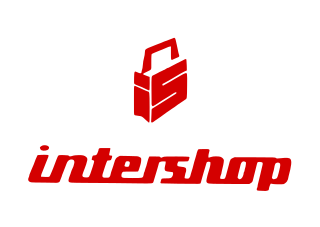 W
WIntershop was a chain of government-owned and operated retail stores in the German Democratic Republic in which only hard currencies could be used to purchase high-quality goods. The East German mark was not accepted as payment. Intershop was originally oriented towards visitors from Western countries, and later became an outlet where East Germans could purchase goods they could not otherwise obtain. An unintended consequence was that ordinary East Germans had some insight into the selection of goods available in the West, which they could then compare with the rather limited offerings available in their own country.
 W
WThe German expression Landwirtschaftliche Produktionsgenossenschaft, or — more commonly — its acronym LPG was the official designation for large, collectivised farms in East Germany, corresponding to Soviet kolkhoz.
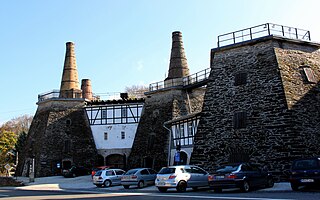 W
WThe Lengefeld Lime Works is a limestone mine southwest of Lengefeld in the Saxon town of Pockau-Lengefeld in the Ore Mountains. It is the last mine in Saxony and the last mine on the German side of the Ore Mountains that still transports men and materials into the mine up and down vertical shafts.
 W
WM10 is a type of a residential panel building in East Germany. The M stands for Magdeburg where they have been built since the early 1970s.
 W
WMain Task was the economic policy proclaimed in the German Democratic Republic during the Eight SED Congress in June 1971, and aimed at increased production of consumer goods for the population and to increase its material well-being in order to provide a higher standard of living for the population. The policy's official goal was "raising the people’s material and cultural standard of living on the basis of a fast developmental pace of socialist production, of higher efficiency, of scientific-technological progress and the growth of the productivity of labour". Or in the official formulation - to achieve "unity of economic and social policy". Between 1971 and 1982 the GDP of the GDR grew at average 5% annually, however the pursued policy only increased the state's debts and by 1982, GDR was nearly insolvent. This change of policy was greatly influenced by the 1970 Polish protests which led to greater emphasis on consumer goods and welfare policies in the entire Eastern Bloc.
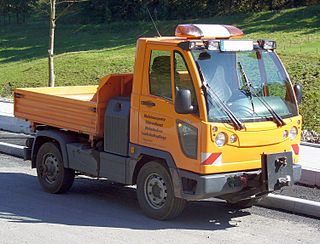 W
WMulticar is a small, specialized multifunctional equipment transporter manufactured at the Hako GmbH factory in Waltershausen, Germany. Multicar is the only brand that has survived from the East German IFA vehicle industry which still produces its own vehicles.
 W
WP2 is the abbreviation for a type of residential panel building found in former East Germany. The P stands for parallel and refers to load-bearing walls arranged parallel to wall surfaces. 2 denotes the arrangement of two stairways in a building.
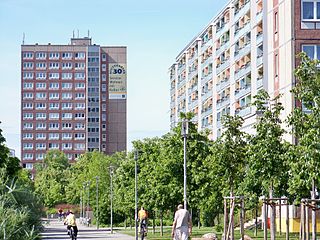 W
WThe PH 16 is a type of industrial housing in East Germany.
 W
WPlattenbau is a building constructed of large, prefabricated concrete slabs. The word is a compound of Platte and Bau (building). Such buildings are often found in housing development areas.
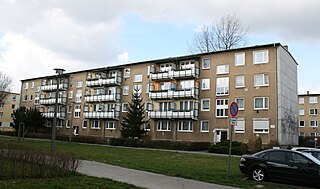 W
WQ3A is an abbreviation for a type of three, four and five storey prefabricated buildings constructed in the GDR in the 1950s and 1960s. The letter "Q" in the word stands for "Querwandbau".
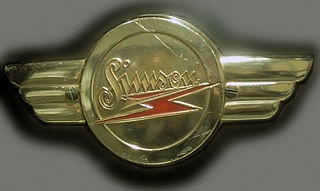 W
WSimson was a German company which produced firearms, automobiles, bicycles and motorcycles, and mopeds. Under the Third Reich, the factory was taken from the Jewish Simson family, and was renamed several times under Nazi and later Communist control. The Simson name was reintroduced as a brand name for mopeds produced at the factory in the former German Democratic Republic (GDR). Simson mopeds were then produced in Suhl (Germany) until 2002.
 W
WThe State Bank of the GDR was the central bank of East Germany. It was established on 1 January 1968 from the Deutsche Notenbank and took over the majority of the same tasks.
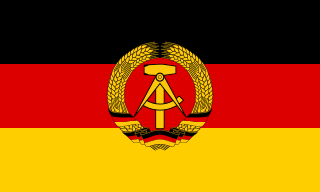 W
WTourism in the German Democratic Republic (GDR) was organised through the state via Reisebüro der DDR.
 W
WThe Trabant 1.1 is the fourth and final series production model of the East German Trabant series, made by VEB Sachsenring Automobilwerke Zwickau. Unlike its predecessors, which have a two-stroke engine, the Trabant 1.1 has a four-stroke Otto engine. In total, 39,474 units of the Trabant 1.1 were made from May 1990 to 30 April 1991, which makes it the rarest Trabant model.
 W
WThe Trabant 600, also known as the Trabant P 60, is the second series production model of the East German Trabant series, made by VEB Sachsenring Automobilwerke Zwickau. It was produced from 1962 until 1965; in total, 106,117 units were built. The Trabant 600 was a short-lived intermediate model that combined the exterior styling of the Trabant P 50 with the technical design of the next generation Trabant model, the Trabant 601. For a short period of time, the Trabant 600 estate was built alongside the 601 saloon.
 W
WThe Trabant P 50, also known as the Trabant 500, is the first series production model of the East German Trabant series, made by VEB Sachsenring Automobilwerke Zwickau. It was produced from 1957 until 1962; in total, 131,495 units were built. In 1962, VEB Sachsenring switched production from the P 50 to the short-lived intermediate model Trabant 600, which combined the exterior styling of the Trabant P 50 with the technical design of the next generation Trabant model, the Trabant 601.
 W
WTransport in the German Democratic Republic was the responsibility of the Ministry of Transport of the German Democratic Republic.
 W
WThe Treuhandanstalt, colloquially referred to as Treuhand, was an agency established by the government of the German Democratic Republic to reprivatise/privatise East German enterprises, Volkseigene Betriebe (VEBs), prior to German reunification. Created by the Volkskammer on 17 June 1990, it oversaw the restructure and sale of about 8,500 state-owned companies with over four million employees. At that time, it was the world's largest industrial enterprise, controlling everything from steel works to the Babelsberg Studios.
 W
WCarl Zeiss AG, branded as ZEISS, is a German manufacturer of optical systems and optoelectronics, founded in Jena, Germany in 1846 by optician Carl Zeiss. Together with Ernst Abbe and Otto Schott he laid the foundation for today's multi-national company. The current company emerged from a reunification of Carl Zeiss companies in East and West Germany with a consolidation phase in the 1990s. ZEISS is active in four business segments with approximately equal revenue, Industrial Quality and Research, Medical Technology, Consumer Markets and Semiconductor Manufacturing Technology in almost 50 countries, has 30 production sites and around 25 development sites worldwide.
 W
WVetragsarbeiter (Contract workers) were foreign workers and trainees who worked in GDR. They were living in the countries long-term, without integration intention as guest workers. However, this did not include employees of foreign companies, foreign students in the GDR, as well as members of Soviet armed forces and their families, refugees or foreign trainees. Contract workers also worked in economically more advanced Comecon-countries such as Czechoslovakia and the People's Republic of Hungary.
 W
WThe Publicly Owned Enterprise was the main legal form of industrial enterprise in East Germany. They were all publicly owned and were formed after mass nationalisation between 1945 and the early 1960s, and the handing back in 1954 of some 33 enterprises previously taken by the Soviet Union as reparations.
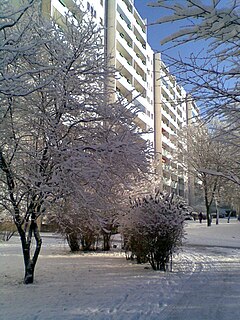 W
WWBS 70 is a type of dwelling that was built in the German Democratic Republic using slab construction. It was developed in the early 1970s by the German Academy of Architecture and the Technical University of Dresden. In 1973, the first block in the city was built in Neubrandenburg and this house is now a historical monument. Of the approximately 1.52 million dwellings constructed in slab construction to 1990, the Type 70 WBS is widespread, accounting for up to 42 percent of housing constructed in the East.
 W
WWestpaket is the common term for care packages sent by West Germans to their friends and families in East Germany during the division of Germany from 1961-1989.
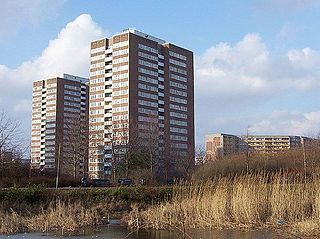 W
WWHH GT 18 is a standard residential high-rise building type in East Berlin. It was developed by architects Helmut Stingl and Joachim Seifert between 1969 and 1971 using large panel construction for mixed-use housing in Berlin.